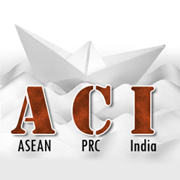Archive | June, 2013
Social development and protection
 Governance and public sector management
Governance and public sector management

The emerging ACI economies: Does a rising tide lift all boats?

Over the past 20 years, the emerging economies of ASEAN, the People’s Republic of China (PRC) and India (ACI) have enjoyed spectacular economic growth. Together they have tripled their share of global GDP measured on a purchasing power parity basis from 11.2% in 1980 to 31.3% in 2010. By 2030, based on current consensus forecasts, their combined share could reach almost half of world output. If these forecasts are correct, by 2030, Singapore will achieve United States (US) living standards, the PRC will be on the verge of developed country status (about 60% of US levels), and relative to the US, India should be just above where the PRC is today in per capita terms.
How sustainable are the BRICS economic and social policies?

The BRICS countries—Brazil, Russian Federation, India, People’s Republic of China (PRC) and South Africa—have been the recipients of much admiration for their high growth rates, which have helped to increase their share in the world economy and reduce global poverty. However, doubts have grown as to whether the process of income convergence will continue. “Sustainable governance” in the BRICS, or rather the lack thereof, lies at the heart of these doubts. The Sustainable Governance Indicators (SGI) study by the Bertelsmann Foundation, a German think tank, sheds light on the status of sustainable governance among the BRICS countries. The study found that economic and social governance appears sustainable in Brazil and the PRC, India is in the middle, and the Russia Federation and South Africa follow the least sustainable economic and social policies among the five BRICS.


Search
Subscribe / Connect to Asia Pathways
Subjects
- Agriculture and natural resources
- Blog
- Capacity development
- Climate change
- Economics
- Education
- Energy
- Environment
- Finance sector development
- Gender
- Governance and public sector management
- Health
- Industry and trade
- Information and Communications Technology
- Infrastructure
- Miscellaneous
- Population
- Poverty
- Private sector development
- Regional cooperation and integration
- Sanitation
- Social development and protection
- Transport
- Uncategorized
- Urban development
- Video Blog
- Water
Recent Posts
- Artificial intelligence: A new driver for inclusive growth and development?
- Increasing trust in cross-border e-commerce and artificial intelligence
- Enhancing access to maternal and newborn healthcare in developing Asia
- Can electric vehicles lead the way to a sustainable future?
- Mitigating climate-related sovereign risk to accelerate action on the climate emergency




Recent Comments